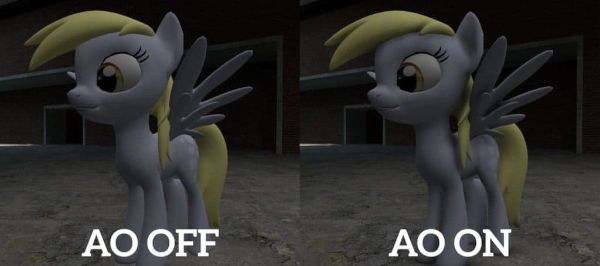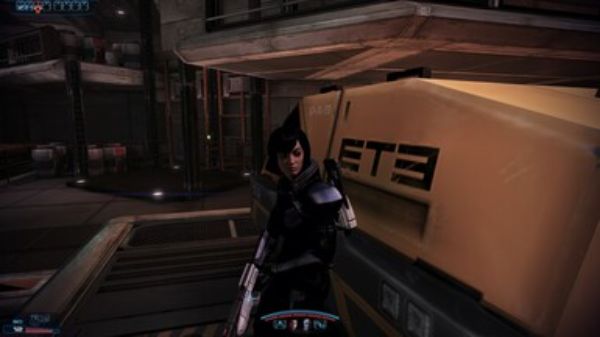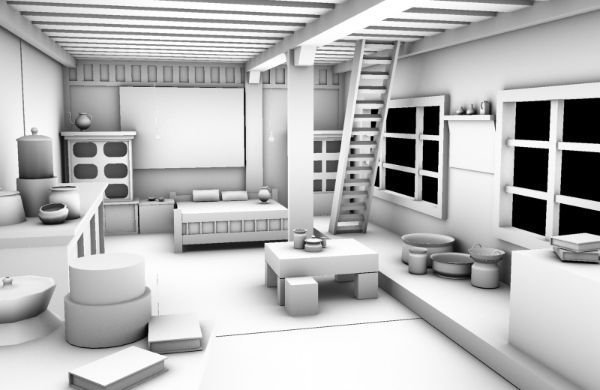Thanks to improvements in hardware, processing power, and graphics, the video game market is booming. Many gaming companies work to deliver more realistic ambient lighting with the new generation of graphics cards. Ambient occlusion in graphics is simply the point at which an object blocks light coming from a source and the point at which an object casts light or shadow in its imagined environment. Learn more about ambient occlusion in games by reading this article.
What Is Ambient Occlusion
Games use the shading technique known as “ambient occlusion” to simulate and depict how much light is falling on various points and objects in a scene.
Basically, it enhances the realism and dynamic nature of lighting and shadows in video games. When you enable ambient occlusion in a game, your computer is instructed to use some processing power to try to determine how much light a particular object should receive.
In a game environment, it costs a lot of computational power to calculate and simulate light and shadows.

I’d advise you to turn on realistic lighting and shadows if you can afford to do so without significantly degrading your frames. They frequently make a significant difference in picture quality and graphic realism. Turn it off if you’re a jittery, fast-moving shooter to get the best response times.
There are many different ambient occlusion techniques, some of which approximate ambient occlusion but don’t require as much computing power, others of which use extremely precise geometry and pixels to map shadows, and then there are methods like Ray tracing, which essentially processes all of the visible light sources in a scene without any emulation.
Types Of Ambient Occlusion
Since graphics cards haven’t always been as powerful as they are now, various strategies have been used over time to produce realistic lighting using the technology at hand.
Screen Space Ambient Occlusion (SSAO)
Ambient occlusion in video games was introduced by Crytek’s SSAO, which is why it was previously mentioned. SSAO is not true ambient occlusion, despite being revolutionary at the time. It only considers a pixel and the pixels surrounding it, rather than accounting for all the elements in the world. As a result, the game can simulate shadow effects that are somewhat realistic.
Screen Space Directional Occlusion (SSDO)
The replacement for SSAO is screen space directional occlusion or SSDO. SSDO considers both the light coming at an object directly and the light reflected off the object directly behind it in place of just pixels. Games became even more realistic as a result of the depth this added.
High-Definition Ambient Occlusion (HDAO)
Self-shadowing object algorithms like HBAO are reimagined by AMD as HDAO. Use HDAO if your graphics card is AMD.
Horizon-Based Ambient Occlusion (HBAO)
Nvidia’s proprietary solution to ambient occlusion, HBAO, represents a significant resolution improvement over SSAO in terms of sampling. Instead of focusing solely on pixel depth, HBAO also restores minuscule portions of the scene to sample geometry to more accurately determine lighting and shadows. Naturally, more sampling results in greater power; HBAO does, however, deliver a more accurate representation of lighting and shadow, but at a higher cost than SSAO.
Voxel Ambient Occlusion (VXAO)
In order to approximate shadowing outside of the current scene, VXAO renders geometrical objects. This method gives scenes an even more realistic feel, making it easy to compare how games of the past and the present differ.
What Is Ray Tracing
A significant improvement over ambient occlusion is ray tracing. The end result is noticeably better and much more realistic when using ray tracing, which actually takes into account 3D geometry, surfaces, and light directions.
Ray Tracing allows a game to only calculate light and objects if they are in the view of the camera, saving a ton of computational power and even allowing a game to run real-time Ray Tracing at 60 frames per second. Calculating every light source and object would take way too much computational power to render a game in real-time.
The majority of graphics cards aren’t strong enough to run games at playable speeds right now, and game support is only fair. When more processing power is available, Ray Tracing will probably become a “thing” because of the increased fidelity it adds to a scene.
Does Ambient Occlusion Really Matter
The quick response is no, not really. Although cool, ambient occlusion ultimately serves as a gimmick. In a previous article, I mentioned that good-looking video games and movies can also use other techniques in addition to ambient occlusion.

In actuality, there are a variety of factors that influence how successful a film or game is. It also depends on the right DLC management, story, and timing.
EA serves as a good illustration of the importance of factors other than just appearance. Because of the numerous microtransactions that hampered the gameplay and gave paying players an advantage, Star Wars Battle Front 2 fell short of its initial sales goal.
Even though the game had stunning visuals, the microtransactions ultimately had to be addressed if EA wanted to continue to be successful.
Similar to 2D platformer Shovel Knight, other games rely on a distinctive blend of action, nostalgia, and humor to draw in a sizable player base. All of these serve as reminders that a game’s success depends on a special combination of design, graphics, and story and that you cannot rely on one element to sell a game.
The Future Of Ambient Occlusion
It goes without saying that ambient occlusion is a really cool and attractive feature. Additionally, there is no denying that GPU technology is advancing annually. How does that impact ambient occlusion going forward?
Although it’s difficult to say, I did mention earlier that gaming engines still support it, even though it isn’t currently widely used.
In my opinion, ambient occlusion belongs on the big screen. It’s true that something you watch is made very differently than something you play. You’re not concerned with the player’s unintentional glances when you’re watching a movie.
No computer program has to make predictions about what the player might do. Players are known for deliberately looking for game bugs, and these bugs may break your game or lead to unintended problems.
Conclusion
With the aid of the technology known as ambient occlusion, in-game lighting can be calculated and approximated to be more realistic, giving players a more realistic experience. Along with new graphics cards, various types of ambient occlusion have evolved over time. It’s one of the many unseen factors that helped create some of our favorite video games and even some well-liked films.
